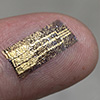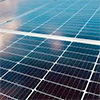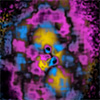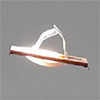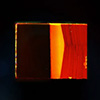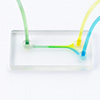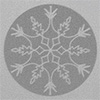Dec 10, 2025 The new design could be adapted to assist the elderly, sort warehouse products, or unload heavy cargo. (Nanowerk News) In the horticultural world, some vines are especially grabby. As they grow, the woody tendrils can wrap around obstacles with enough force to pull down entire fences and...
Shape-shifting bioelectronic skin transforms from rigid to soft on contact
Dec 10, 2025 Researchers created a 350nm-thick bioelectronic film that turns soft when wet to stick to hearts and brains without glue, revolutionizing medical monitoring. (Nanowerk News) A research team has developed a new material designed to improve the monitoring of vital organs. Scientists from the Center for Neuroscience Imaging...
Carbon nanotubes could power a new generation of flexible solar panels
Dec 10, 2025 Replacing ITO with single-walled carbon nanotubes could make perovskite solar cells cheaper, more efficient, robust, scalable and truly flexible. (Nanowerk News) Perovskite solar cells can be made not only more robust but also more efficient, scalable and cheaper to manufacture by replacing the indium tin oxide (ITO)...
Carbon rich asteroids offer clues and resources for future space mining
Dec 10, 2025 Analysis of C type asteroid samples supports use as sources of metals and primordial material and helps target missions and resource technology. (Nanowerk News) Much remains to be known about the chemical composition of small asteroids. Their potential to harbour valuable metals, materials from the early solar...
Painting galaxy clusters by numbers (and physics)
Dec 10, 2025 New X-ray imaging method maps sound waves, shocks, bubbles and cooling gas in galaxy clusters, revealing stronger black hole feedback in groups. (Nanowerk News) Galaxy clusters are the most massive objects in the Universe held together by gravity, containing up to several thousand individual galaxies and huge...
Light-powered insect-scale soft robot achieves continuous autonomous jumping without electronics
Dec 10, 2025 A 301 mg soft robot jumps continuously under constant light without batteries or electronics, using snap-through buckling and self-shadowing to create an autonomous feedback loop. (Nanowerk Spotlight) A soft robot smaller than a paper clip and lighter than a few grains of rice has achieved something few...
Surprising nanoscopic heat traps found in diamonds
Dec 09, 2025 Scientists discover 'hot spots' around atomic defects in diamonds, challenging assumptions about the world's best heat conductor. (Nanowerk News) Diamond, famous in material science for being the best natural heat conductor on Earth – but new research reveals that, at the atomic scale, it can briefly trap...
Turning everyday filter paper into a miniature microfluidic platform with DLP 3D printing
Dec 10, 2025 3D printing creates hydrophobic barriers in hydrophilic paper, guiding liquids along precise paths for controlled mixing, gradients, and two-phase separation. (Nanowerk News) Filter paper plays important roles in everyday laboratory work, from simple solid-liquid separation to chromatography, thanks to its microstructural properties. It is composed of small...
Laser draws made-to-order magnetic landscapes
Dec 10, 2025 Researchers have for the first time used lasers to continuously tune 2D materials' magnetic properties, enabling new data storage and processing applications. (Nanowerk News) Sometimes using conventional tools in a novel way produces astounding results. That's what happened when researchers used the high-tech laser equipment in PSI's...
New report outlines science priorities for human Mars exploration
Dec 10, 2025 A comprehensive report lays out a detailed science strategy to guide the initial human missions to the red planet. (Nanowerk News) The report, commissioned by NASA, identifies the highest priority scientific objectives for the missions as well as proposes four distinct mission campaigns designed to maximize the...


